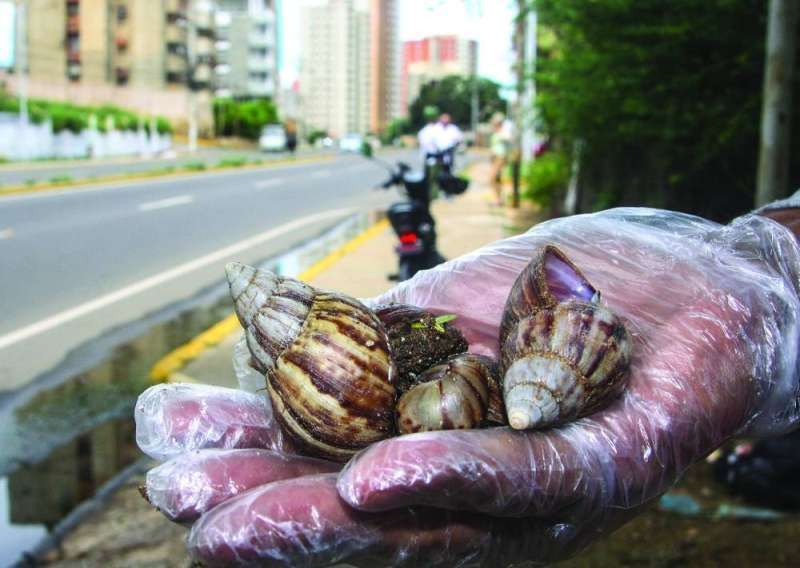Western Venezuela has been exposed to an invasion of giant African snails that can transmit meningitis and crop plague, and its spread is likely due to the recent heavy rains in the region, according to the non-governmental organization Fundacion Azul Ambientalista.
The first “colonies” of this type of southern desert snail, Achatina fulica, were discovered in November on the shores of Lake Maracaibo in the city of the same name, the capital of Zulia state, reports a local Arabic daily quoting AFP.
Then additional foci of spread appeared in other areas of this state in western Venezuela, as well as in the neighboring state of Tachira.
“Between 350 and 400 snails are being collected daily” in some locations, Maracaibo Mayor Rafael Ramirez told AFP.
During an operation to combat this spread in the city, more than 437 giant snails were found within two hours.
Alerts about soft gastropods have been posted on social media, and the Maracaibo municipality has taken measures with the national government and the Zulia government to limit its spread.
Achatina snails have attracted interest from the cosmetics industry because their saliva can be used in some of their products, and has been in Venezuela since 1997.
It had previously invaded some of its regions in 2017, but to a lesser extent, according to Jose Sandoval of the Fundación Athol Impetalista.
He said, “It will be complicated, because this time the snails are large and mature and have laid eggs.”
“We are facing an invasion (…) and therefore it is very difficult to eradicate it (…), but it is possible to control” its presence, he added.
Due to their ability to reproduce (up to 600 eggs every 15 days) and their average lifespan of up to six years, these snails are among the most invasive species harmful to crops and even human health, as they can transmit diseases such as meningitis.
Sandoval explained that the spread of these snails “is not caused by observation,” but the only reason is the weather, explaining that it is due to the heavy rain this year.
The authorities of the US state of Florida complained last July of the invasion of these snails, which can reach a size of 20 centimeters.

